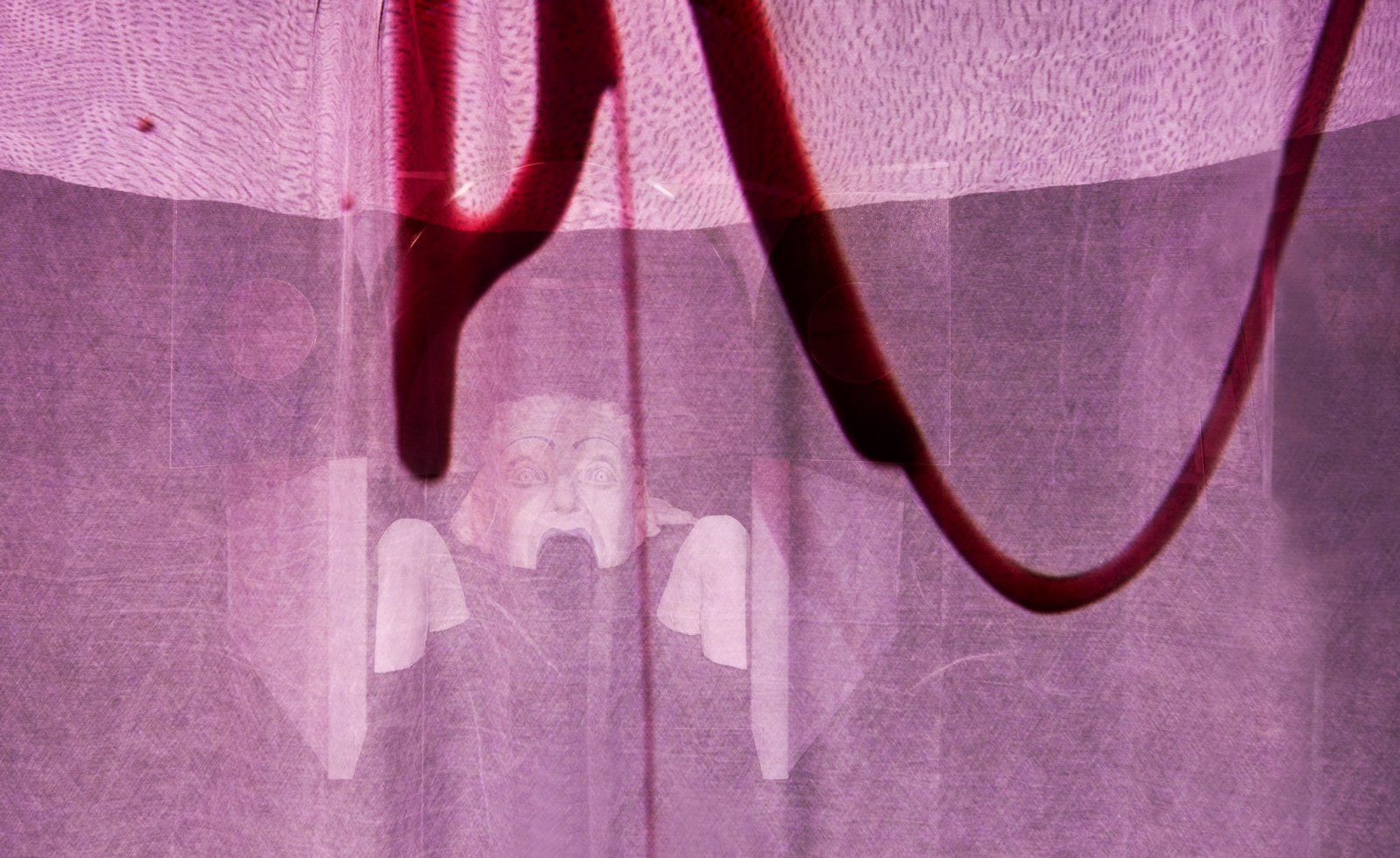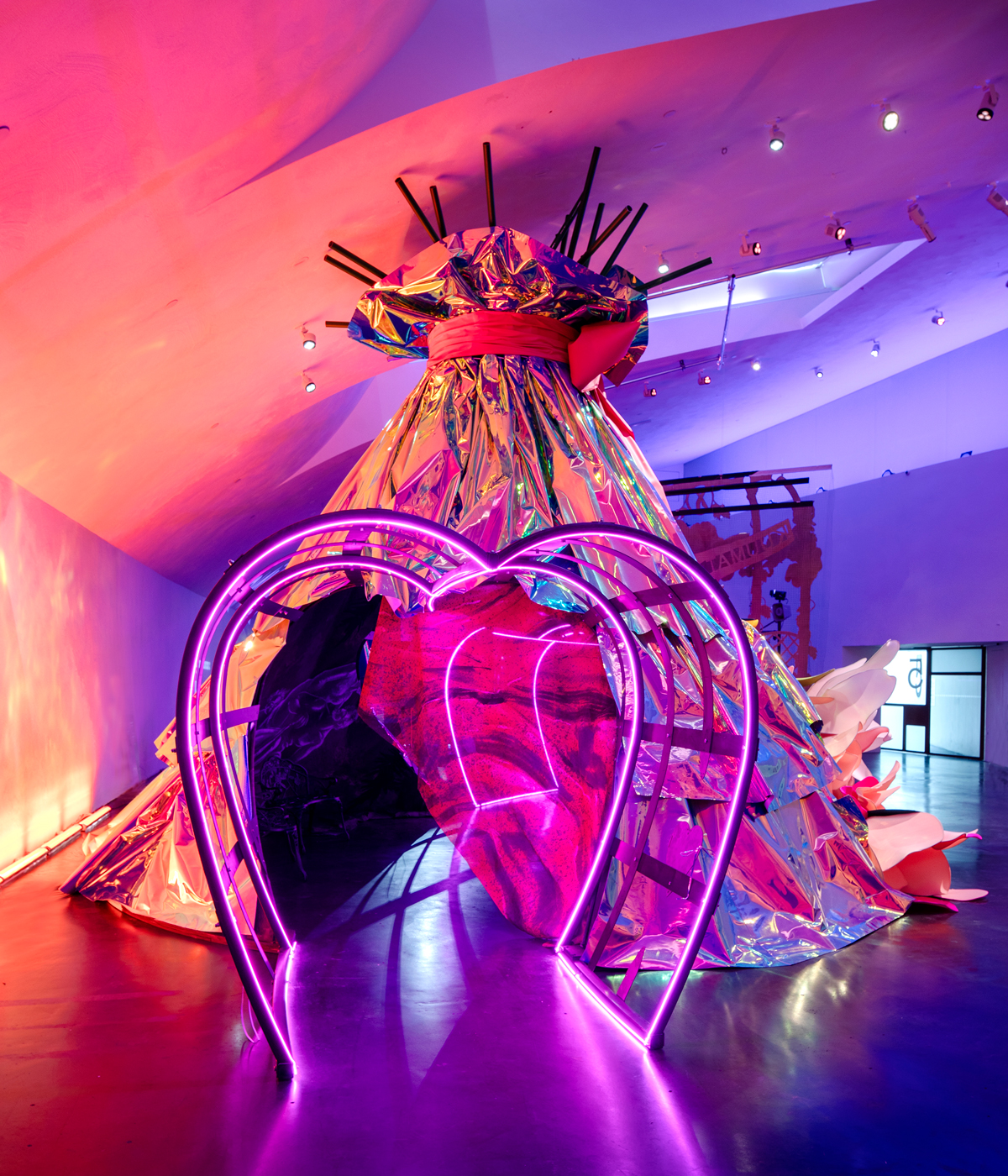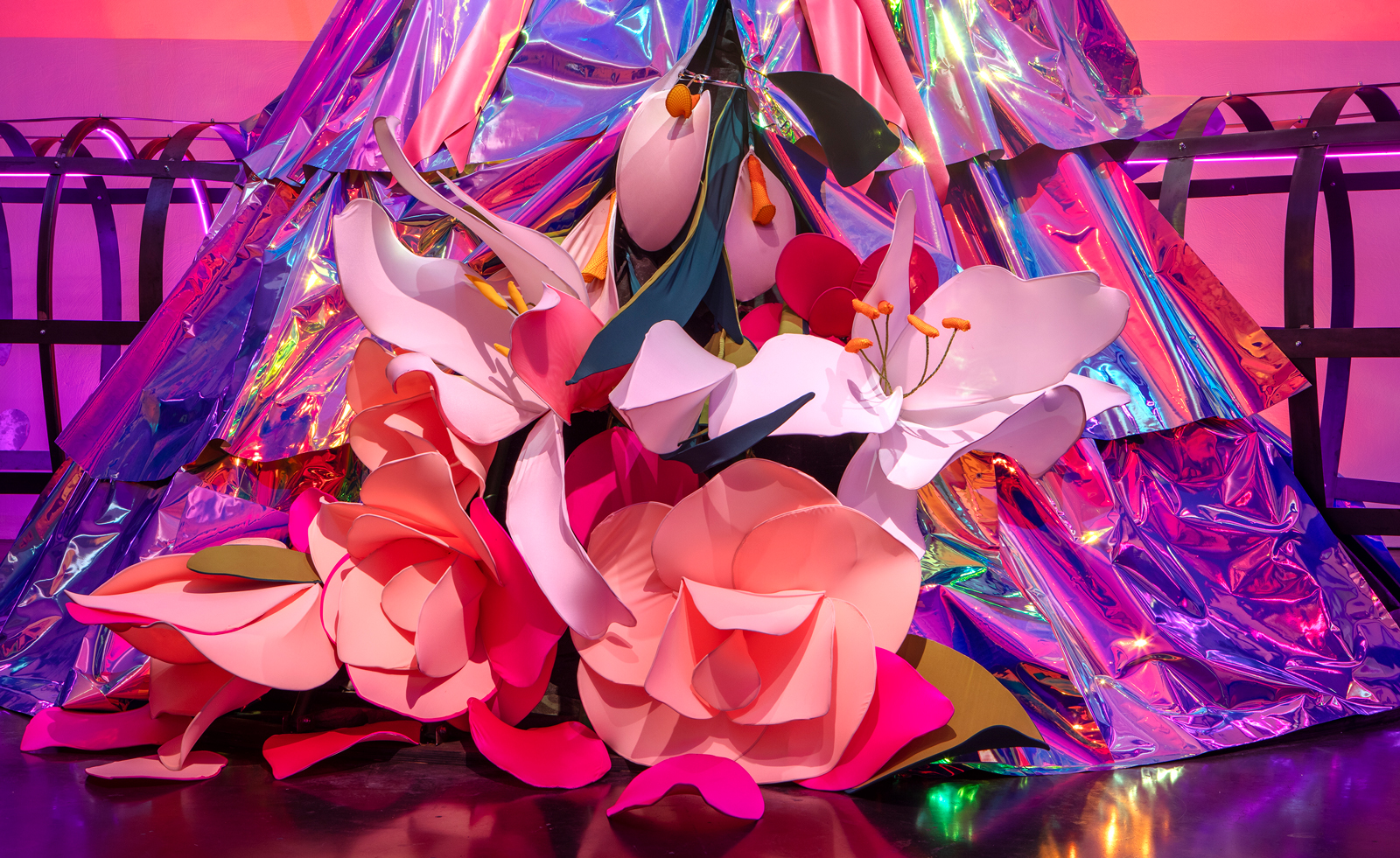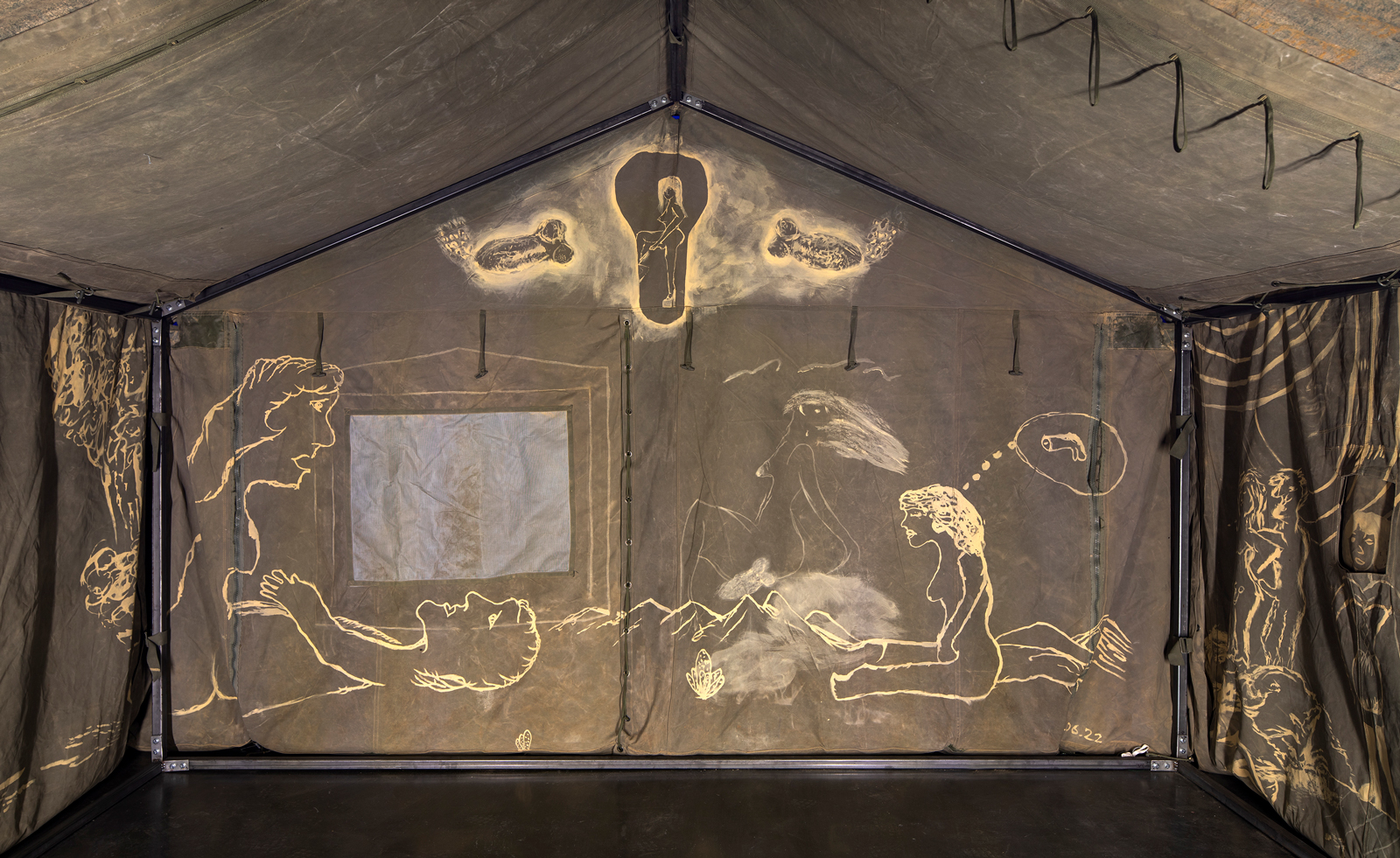
At Kiasma—Helsinki’s Museum of Contemporary Art—French artist Pauline Curnier Jardin has finally been afforded the space to construct the grotesque amusement park of her dreams. We enter on the periphery of the so-called Luna Park, a zone where the more marginalised figures of the entertainment industry are known to congregate. A khaki-coloured military tent occupies the room, with a bucket full of silver coins next to its small cut-out viewing window. Activated by the coin slot, the interior of the tent lights up dramatically, revealing a peepshow of sexual drawings lining its walls. These simple figurative illustrations were done by members of the Feel Good Cooperative—an artistic collective made up of artists, architects and a group of Colombian trans sex workers and their allies, co-initiated by Curnier Jardin during the Covid lockdowns—and depict their everyday work.

As an entry point into this comprehensive exhibition, Le Tombeau (2022) is rife with meaning: despite initial appearances, the spaces Curnier Jardin penetrates in her practice are not just ones of wholesome diversion but also include the integral labour of disenfranchised members of society. She’s interested in appropriating the visual language of fanfare to speak about the history of power underlying forms of gathering and community enacted in the western world—from the overt violence of the colosseum to the more insidious colonial, racial and gendered inequalities presented in world fairs and theme parks.
'Even though it’s an amusement park, each of the attractions, each little island, carries a heavy history and, at the same time, it looks playful,' Curnier Jardin explains of her show at Kiasma. 'This is what my work has asked for a long time: How can something that is violent be the origin of entertainment?'

In close collaboration with scenographer Rachel Garcia, Curnier Jardin has realised an eye-catching architectural feat at Kiasma. Three installations—each a vivid theme park attraction in its own right—take over the central space. The Luna Kino (2022) pays homage to a real cinema, the Luna Lichtspiegel, which was run by a woman and thus remained open throughout the Second World War in Germany, as a tool of mass entertainment and morale during wartime. These kinds of propagandistic diversions mask a bloody reality, and Curnier Jardin’s installation here mirrors the horror underlying them—a gaping entry to the cave arches above the open legs of a reclined female figure, thick red liquid dripping from a transparent screen behind.
'These are not soft realities, they are not easy aspects of life,' Curnier Jardin says of the topics covered in the show and her preoccupation with blood as subject matter and material. 'For a long time now, I have re-appropriated the presence of blood to say it’s not only [about] horror or pain, it’s also the reality of life. When there is blood, there is life.'
'For a long time now, I have re-appropriated the presence of blood to say it’s not only [about] horror or pain, it’s also the reality of life. When there is blood, there is life.'
Pauline Curnier Jardin

The flower-clad Tunnel of Love (2024) features her film Bled Out (2019) about postmenopausal sexuality and, fittingly, we emerge from the passageway into the Hot Flashes Forest (2019). Next, we enter a massive, fleshy colosseum structure at the far end of the exhibition. In it, Curnier Jardin screens her 2021 film Fat to Ashes, bringing together footage from religious and carnivalesque gatherings across Europe, cinematically and aurally highlighting their monstrous qualities. Echoing the scope of the show as a whole, this film details a host of rituals that underpin western society, revealing a societal fascination with carnality, gore and ecstatic violence.
Pauline Curnier Jardin is at Kiasma, Helsinki’s Museum of Contemporary Art until 23 February 2025







